ERS Course Learning Material
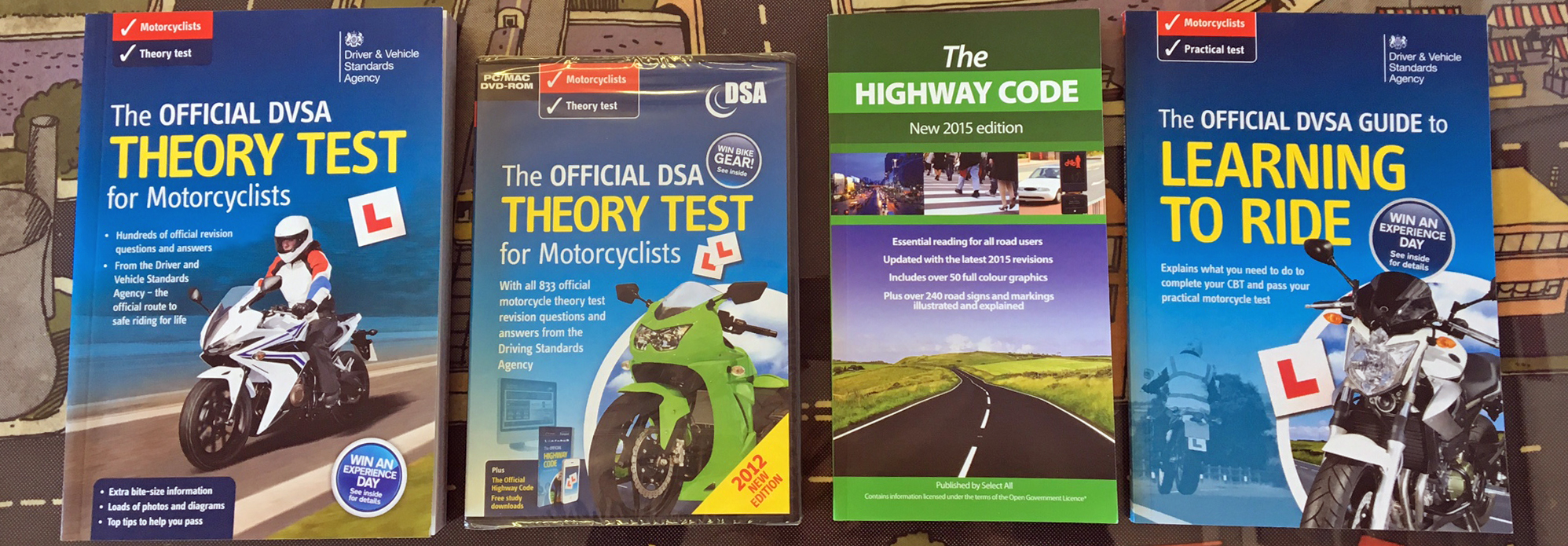
ERS Handout
i). Motorcycle Types
There is an almost limitless variation of the types of motorcycle currently available but essentially they break down into the following groups:
Scooters 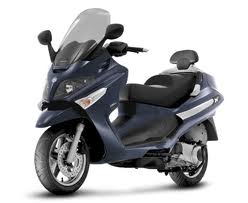 – these are for the most part automatic and generally small capacity (although there is now an increasing trend towards 250 – 600cc bikes). They make ideal commuters due to their inherent weather protection and luggage space.
– these are for the most part automatic and generally small capacity (although there is now an increasing trend towards 250 – 600cc bikes). They make ideal commuters due to their inherent weather protection and luggage space.
Custom 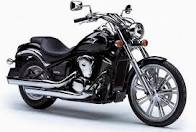 – these range from about 500 – 2000cc and are designed for style over function. Generally un-faired and designed for 50-60mph cruising, nevertheless some people use them for touring. Very popular during the summer months and at festivals. Comfortable at lower speeds but can be time consuming to keep clean.
– these range from about 500 – 2000cc and are designed for style over function. Generally un-faired and designed for 50-60mph cruising, nevertheless some people use them for touring. Very popular during the summer months and at festivals. Comfortable at lower speeds but can be time consuming to keep clean.
Sport/Tour 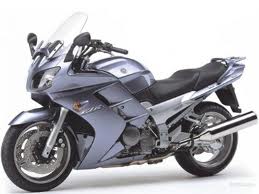 – typically motorcycles of 600cc and above, these bikes try and be all things to all comers. Designed for luggage and comfortable long-distance riding necessitates a fairing. These bikes can be good commuters for longer distances that involve motorways.
– typically motorcycles of 600cc and above, these bikes try and be all things to all comers. Designed for luggage and comfortable long-distance riding necessitates a fairing. These bikes can be good commuters for longer distances that involve motorways.
Supersport 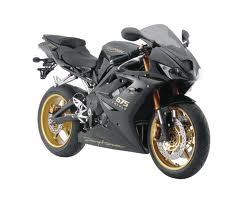 – very focused motorcycle of 600cc+ designed specifically to deliver high performance in speed and handling. These bikes are excellent fun for Track Days, but can be uncomfortable on the road and expensive (particularly in tyres) to run.
– very focused motorcycle of 600cc+ designed specifically to deliver high performance in speed and handling. These bikes are excellent fun for Track Days, but can be uncomfortable on the road and expensive (particularly in tyres) to run.
Naked 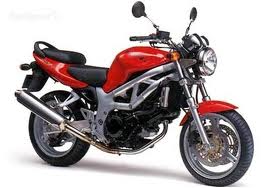 – 400-1200cc bikes that are more road focused than a custom bike (so have a riding position that allows greater speed) but lack the fairing of Touring and Sport/Tour bikes. Very good all-rounders that can commute well if the motorways are less than 50 miles. Style is an important consideration to potential buyers.
– 400-1200cc bikes that are more road focused than a custom bike (so have a riding position that allows greater speed) but lack the fairing of Touring and Sport/Tour bikes. Very good all-rounders that can commute well if the motorways are less than 50 miles. Style is an important consideration to potential buyers.
Adventure Sport/Trail/Enduro 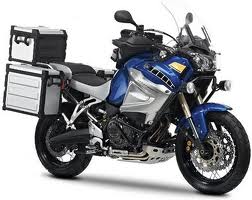
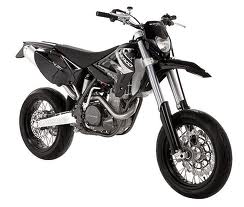 – this covers a wide range of bikes whose common theme is that they have pretensions to riding off-road. At the larger end the bikes are really Touring bikes (and of little use off-road, unless they are made by KTM) while the smaller 250cc bikes are only at home off-road. The bigger bikes tend to be heavy and very tall, but exceedingly comfortable.
– this covers a wide range of bikes whose common theme is that they have pretensions to riding off-road. At the larger end the bikes are really Touring bikes (and of little use off-road, unless they are made by KTM) while the smaller 250cc bikes are only at home off-road. The bigger bikes tend to be heavy and very tall, but exceedingly comfortable.
Touring 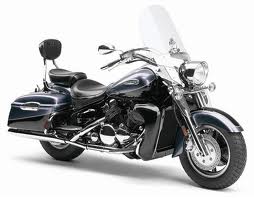 – generally very large capacity bikes that are designed specifically for comfort and passenger/luggage capacity. These are normally very heavy bikes that specialise in accessories, but can be very expensive to run. For many companies these are their flagship bikes.
– generally very large capacity bikes that are designed specifically for comfort and passenger/luggage capacity. These are normally very heavy bikes that specialise in accessories, but can be very expensive to run. For many companies these are their flagship bikes.
The following website – http://www.motorcyclenews.com/MCN/bikereviews/ gives a breakdown of bikes by type.
ii). Carrying a passenger
This is a considerable responsibility as the rider needs to consider the safety and comfort of the passenger (pillion). There are principally three things to be aware of – firstly, you may need to make adjustments to your motorcycle (such as tyre pressure, suspension settings etc.), secondly, you will need to adjust your riding style to allow for longer braking, slower acceleration (particularly on smaller machines) and different handling; and finally, that your passenger is properly clothed and aware of how to respond to the way a motorcycle rides (such as leaning with the machine). You can read more information on this topic at http://www.rospa.com/faqs/detail.aspx?faq=435 .
iii). Accessories & luggage
Some of the issues with taking a passenger are also relevant to having accessories and luggage in terms of how they may affect the performance of your motorcycle. It is very important to ensure that luggage is properly secured and does not exceed the load capacity. There are generally two types of luggage – hard luggage which is bolted or fastened onto the motorcycle (for example a top box) and soft luggage, like throw-over panniers, that can be taken on and off easily.
Accessories are many and varied such as crash bungs or fog lights. Again important points to remember are that they are correctly fitted and wired if necessary (heated grips), and that your insurance company is aware of changes that you have made to your motorcycle.
iv). Clothing & rider protection
A vital part of any rider’s budget must be set aside for clothing and protection. Obviously it is a legal requirement to ride with a fastened safety helmet, but you also have a clear responsibility to ensure your own safety by wearing clothing that will be suitable for your style of riding and the prevailing conditions. Typically clothing has a dual purpose of trying to offer protection in the form of abrasion resistant material and armour (CE approved), and to keep you warm and dry. There are many clothing manufactures but it is good practice to buy from UK sources and well-known brands to ensure that any protection meets UK safety levels (which are generally amongst the best in the world).
v). Handling an incident
It is a fact of life that if you use the road in any capacity you either may come across or be part of a road traffic collision (RTC). Being able to deal with this situation will significantly increase the survival chances of anybody involved (and this could well be friends or loved ones). A great deal of hard work has been put into making it easy for people to follow simple steps that will save lives. Principally DR ABC – Danger, Response – Airways, Breathing, Compression. For the little time it takes to read – http://www.direct.gov.uk/en/TravelAndTransport/Highwaycode/DG_069872 the payback can be enormous.
vi). Environmental issues
One of the things motorcycle manufactures are quick to point out is that motorcycles have a smaller environmental impact than a car. We still need to acknowledge, however, that motorcycles do affect our environment by burning fossil fuel and using natural resources (oil, rubber etc.) in their running and construction. The more we can do to reduce this impact the greater the chance our children will have of not having to pay for our lifestyle.
There are several practical steps we can take – not accelerate hard unnecessarily, use a higher gear, service your machine to maintain fuel efficiency, not let it idle for excessive periods (so turn it off in traffic jams), and being careful not to overfill the engine with oil.
vii). Motorcycle maintenance
There are three key points here: firstly, read your owners handbook that is specific to your machine and pay attention to important dates such as service schedules. This will cover routine maintenance. Secondly, check your bike regularly (before going on a ride) and investigate when you hear or feel any changes to your bike. Finally, acknowledge when something is beyond your ability or experience and take your bike to a reputable garage. Riding your motorcycle when it is defective is putting yourself (and others) in real danger, and in this case ignorance is no excuse.
viii). Motorcycle security
Aside from the inconvenience of having your motorcycle stolen and the potential difficulty in getting to work or otherwise you should also consider that the theft of your motorcycle helps support criminals and increases everyone’s insurance premium. With this is in mind it is important that we all take steps to make it as hard as possible for thieves to steal our motorcycles. There are several practical steps that you can take: always lock your bike with the steering lock, lock it to something solid (railings etc.) with a Thatcham approved lock, place a cover over it, fit an alarm/immobiliser, and keep it in a locked garage/shed. The more of these things you can do the better.
ix). The law
There are two aspects to the law – licencing and the Highway Code. Licence laws are complicated and frequently change; we advise that you call either a Training School or the DSA to get the latest information. The Highway Code is an important part of using today’s roads and while not all of it is law it does provide a framework of how all road users are expected to use the road http://www.direct.gov.uk/en/TravelAndTransport/Highwaycode/DG_070202 .
To ride a motorcycle legally on the road, you must be licenced and have passed whatever the necessary test is to ride your choice of motorcycle. To carry a passenger, you will need to have a full motorcycle licence (this includes restricted licences). There are laws that apply to your motorcycle such as minimum tread depths (1mm) and what you must wear (an approved safety helmet). As with all law ignorance does not protect you from prosecution or liability.
x). Group riding
Part of the pleasure of owning a motorcycle is that it can be a group experience. However, group riding on the road carries extra responsibilities. Principally the person leading the group needs to be very considerate to those following and be prepared to slow down significantly or even stop to allow others to catch up. If you are following this is not an excuse to break speed limits or indulge in dangerous overtakes just to keep up. A properly prepared route plan before the ride will allow everyone to go at their own pace without fear of getting lost or left behind, as will having everyone’s mobile phone numbers.
xi). Mobile phones
Operating a mobile phone while riding is illegal unless it is a hands-free device. It is possible to get Bluetooth devices fitted to a helmet that allow voice activation to make and answer calls. However, make sure that you are familiar with how to make this work effectively before riding your motorcycle. The same can be said of devices like a Satnav, which can make riding easier provided it is set up ready for use before you start riding. If you need to alter your Satnav or manually answer your phone you must stop and switch your engine off.
Carrying a mobile phone is a good idea while riding a motorcycle, particularly in case of emergency; if your bike breaks down, you come across the scene of an accident, you want to let concerned relatives know your ride is taking longer than expected or if you are part of a group ride. The following company stocks products for use with mobile phones – http://starcom1.com/ .
xii). Riding at night
Riding at night can present some real hazards and one or two advantages. Principally how far ahead we can see (particularly with reference to the road surface) and our conspicuousness can be impaired (if we’re not wearing the right clothing). On the other hand, seeing oncoming vehicles, especially on the approach to bends and the brow of hills, can be improved, and our own visibility can be better than daytime if we’re wearing the correct clothing.
There are several sensible precautions that we can make – wearing the right clothing (reflective Hi-Viz), making sure we have a clean, clear visor free of scratches and ensuring our lights (front and rear) are functioning properly and are correctly aligned.
For further practical tips read the following: https://www.motosport.com/blog/10-essentials-for-riding-a-motorcycle-at-night
xiii). Weather conditions
Weather conditions have even more impact on motorcyclists than car drivers. On a fundamental level our grip on the road can be affected enormously by changes in the weather; and this can happen during the course of a ride. In addition, our concentration will be affected by our own comfort; so, if we’re too hot or cold this will serve as a distraction. Particularly if you are taking a longer trip it pays to take some precautions by packing waterproofs, or by having somewhere to stow unwanted extra clothing. Therefore, forward planning plays its part and checking weather conditions before leaving pays dividends.
Having an understanding of where in particular weather conditions will have an effect will allow for good planning. So, for example it often stays wet under trees for longer than more exposed places after the rain has stopped. Where the cold can get under a road (for example a bridge) then these places can often be icy quicker in sudden cold snaps.
Adapting to conditions is the key to safety here; longer more progressive braking, smoother acceleration, keeping a higher gear etc. can all help mitigate when weather conditions alter the road surface. See the following link for practical steps that can be taken: http://www.direct.gov.uk/en/TravelAndTransport/Highwaycode/DG_069859
Reading material list:
The Official DSA Guide to Riding, The Essential Skills.
DfT, Highway Code.
Motorcycle Roadcraft, The Police Riders handbook to better motorcycling.
DfT, Know Your Traffic Signs
DVD, Better Biking The Official DSA Training Aid.
Theory Questions:
Course Hand Out Theory Questions
Motorcycle Types:
1/. Name two types of motorcycle.
2/. What is the main difference between a Naked and a Sport motorcycle?
Carrying a passenger or load:
1/. Name two changes you would make to your motorcycle when carrying extra weight.
2/. How is carrying extra weight on the back going to affect the handling of your motorcycle?
3/. When using a tank bag this could interfere with the ability to do what?
Accessories & Luggage:
1/. Who is responsible to make sure any load is correctly secured?
2/. What is the purpose of frame crash bobbins?
Clothing & Rider Protection:
1/. Name two types of material used in the construction of motorcycle clothing.
2/. By law you must wear a safety helmet. All helmets sold in the UK must comply with an approved standard. What is the ECE (Economic Commission for Europe) standard?
3/. What mark should be on any clothing that implies or claims protection other than from the weather?
Handling an Incident:
1/. What are the three things to remember when first to arrive at an incident?
2/. What does the letters DR A B C stands for?
Environment Issues:
1/. Name two ways you can save fuel by changing the way you ride.
2/. You’ve been waiting in traffic over 2 minutes what could you consider doing to save fuel?
Motorcycle Maintenance:
1/.When adjusting your motorcycle chain why is it important the rear wheel is aligned correctly?
2/.When & how often should you check your tyre pressures?
3/.Pre-ride checks are abbreviated into easily remembered acronyms such as P.O.W.D.E.R. and B.O.L.T.S., what do they stand for?
Motorcycle Security:
1/. What steps can you take to make it difficult for thieves?
2/. Other than locking your bike up what other security measures could you use?
The Law:
1/. How many points can you incur before your licence is revoked within your first two years from the date of passing a practical test?
2/. What category of licence must you hold to entitle you to carry a passenger?
Group Riding:
1/. When riding in a group, riders should position themselves where in respect of the rider in front?
2/. Why would it be a good idea to take a mobile phone when riding in a group?
Mobile phones/GPS/Radios:
1/. If your phone starts to ring whilst riding what should you do?
2/. Name two types of navigational aids?
Highway Code:
1/. What is the overall stopping distance at 30mph (in metres)?
2/. What is the difference between a toucan and pelican crossing?
3/. What is the meaning of this traffic sign?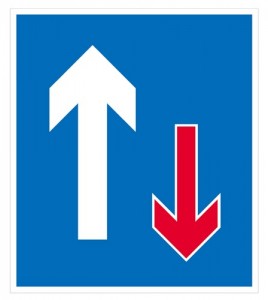
4/. Where would you find this sign?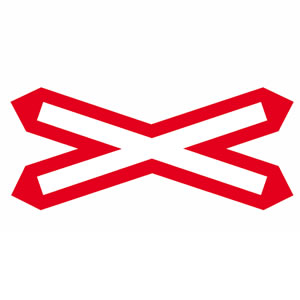
5/. What does this sign mean?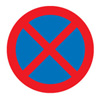
6/. What does this sign mean?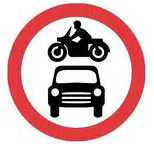
Riding at Night:
1/. What should do if oncoming vehicles headlights dazzle you?
2/. What does the Highway Code stipulate about using your horn at night?
3/. Take a look at the picture below and describe what the potential hazard is: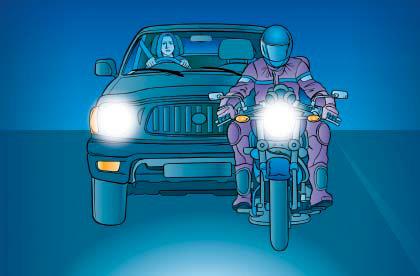
Weather Conditions:
1/. Why does riding in very heavy rain reduce your stability and stopping distances?
2/. You are riding on a motorway into a strong headwind, what extra hazard is likely to present itself?
3/. When riding in windy weather give three examples where you’re likely to be affected by crosswinds.
